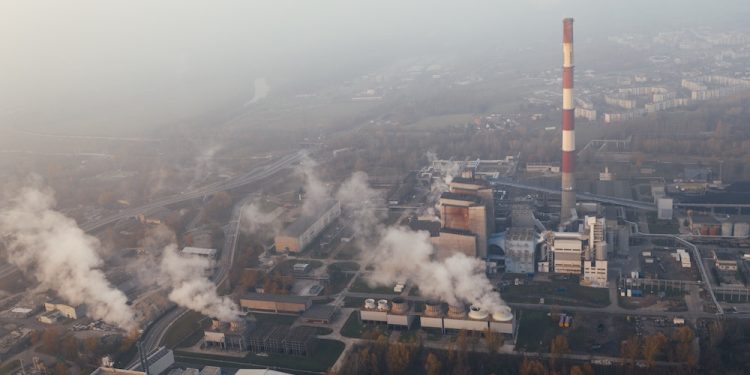At an investor presentation in 2020, the multinational oil and gas giant Shell estimated that it might need to plant a forest the size of Brazil to offset their remaining emissions. And that’s just Shell.
The feasibility of offsets and their ability to deliver genuine emissions reductions is still the subject of substantial debate. Can an oil and gas company, with its inherently substantial emissions, ever sufficiently rely on carbon offsetting? Can anyone?
The voluntary carbon market (VCM) is arguably the most polarizing aspect of global action on climate change. To re-cap, we know that the VCM allows organizations and individuals to voluntarily offset their carbon emissions. Virtually anyone can offset – from international oil and gas corporations, to transport and logistics companies, to private individuals who want to reduce the carbon footprint of their air travel.
- Participants in these markets can purchase carbon credits from projects that have reduced or removed an equivalent amount of greenhouse gases from the atmosphere.
- Buyers then retire or cancel these credits to claim they have neutralized their carbon footprint. Carbon credits in the VCM are governed by private carbon standards.
- National regulatory bodies can define rules for VCM activities, but they are not directly involved in the certification and issuance of carbon credits.
The effectiveness of offsets is one question, the effectiveness of carbon markets is another. Some markets are well-regulated and transparent, while others lack oversight, leading to potential issues with environmental integrity as well as social equity. Additionally, the scale of emissions reductions achieved through voluntary markets may not be sufficient to meet global climate goals as stipulated in our climate bible – the Paris Agreement.
Carbon in Paris
The premise of the Paris Agreement, particularly Article 6, is flexibility in emissions reductions. This was critical in driving a global accord agreement post the Kyoto Protocol- which also worked on the principle of common but differentiated responsibilities, but distinctly placed more responsibility on developed countries, and had legally binding commitments. No country (especially the big polluters) wants to be mandated to do the right thing – so Paris provides a flexible framework that encourages cooperative action.
The Paris Agreement is a legally binding international treaty that aims to limit global warming to a best case scenario of 1.5°C and significantly below 2°C, compared to pre-industrial levels. The Paris Agreement coined the term “net zero”, stipulating that the global net greenhouse gas emissions should fall to zero in the second half of the century.
- Through it, countries are expected to submit a Nationally Determined Contribution (NDC) indicating their individual action to cut emissions in line with the 1.5°C goal, and to adapt to climate impacts.
- 196 countries are signatories to the agreement, and 187 of these have submitted their NDCs – representing over 95% of the territorial greenhouse gas (GHG) emissions and includes all major emitting countries.
While the Paris Agreement is a significant step in the global fight against climate change, it still falls short of keeping the planet from plunder. According to several assessments, the commitments made by countries are unlikely to achieve a 1.5°C or 2.0°C goal. In fact, they are more likely to lead to a level of warming of 2.7°C to 3.5°C by the end of the century. Quite literally, catastrophe.
Context into the emissions gap is important – because it gives us an appropriate lens in which to view the viability and efficacy of the voluntary carbon market. If the VCM doesn’t drive the weight of emissions reductions needed to keep global warming at bay – what is the point?
Article 6
Article 6 allows for a framework for international cooperative approaches where countries can voluntarily cooperate in implementing their NDCs through market and non-market mechanisms. Countries have to meet common participation requirements which they agree between themselves and can then transfer mitigation outcomes between them. This framework is intended to strengthen the effectiveness of carbon markets and enhance ambition in addressing climate change.
Secondly, it creates a mechanism, a market-based instrument, that countries can voluntarily use to trade credits from emission reduction and removal projects. Under the mechanism, reducing emission levels in one country can be used by another country to fulfil its NDC. The mechanism incentivizes and facilitates the participation of accredited public and private entities (Designated Operational Entities – DOEs) by crediting their emission reduction and removal activities, provided that they are in line with Paris Agreement targets.
The success of carbon markets is dependent on how well they are integrated into broader climate policies and international agreements. More on how this relates to the VCM in our next article.
If you’re keen to understand the elusive world of carbon and how you can strategically engage, keep reading our carbon series where we dig deeper, challenge ideologies and navigate the intricacies of this dynamic landscape.
RELATED;
Navigating the Complex World of the Voluntary Carbon Market
Explainer: What are Carbon Credits?
About the Author:
Dr. Yvonne Maingey-Muriuki is an expert in climate change adaptation, with over 15 years of combined academic and practical experience. She is an advisor to multiple entities including EABL, NCBA Group, Bamburi Cement, Nairobi Securities Exchange (NSE), Save the Children, Oxfam and major players in the Tea Sector in Kenya, in climate risk, climate finance, sustainability and ESG reporting. Dr Yvonne is also Cofounder and CEO of Klima Harvest, a new global marketplace, exchange, and auction platform for high integrity carbon credits generated in Africa.




